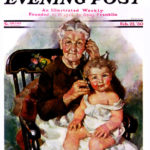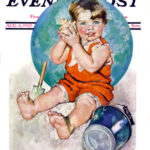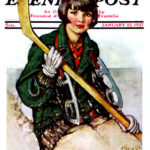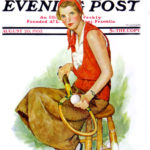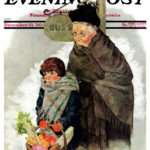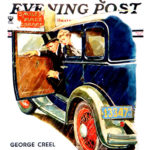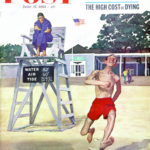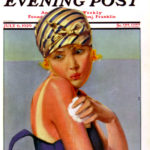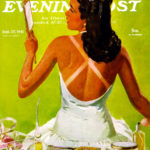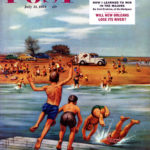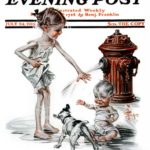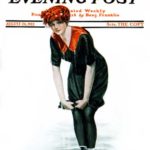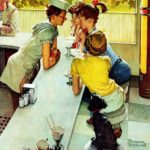Planting Fall Crops
By now, parts of your garden may look like a disaster area. Your lettuce and early greens have bolted into a tangled, inedible mass. Some of your early plantings of squash or cucumbers may have succumbed to too much rain or to beetles. Take heart! Even in July, there is still time to plant many vegetables for a fall harvest. Among them are beets, broccoli, cabbage, carrots, chard, garlic, heat-resistant greens, onions, and shallots. And, if certain tender vegetables have failed, you may still be able to replace them with healthy seedlings from the garden center, including cucumbers, peppers, and tomatoes.
When planting new seeds for fall, check the time-to-harvest information on the seed packet and add an additional time for tender plants that grow slower in cooler weather. Then count backward from the first frost date in your area to determine planting time. Tender crops, such as beans, corn, cucumbers, eggplant, and summer squash will be destroyed by the first light frost. Semihardy vegetables, such as beets, swiss chard, spinach, radishes, carrots, and lettuce, will tolerate temperatures in the upper 20s (Fahrenheit). Hardy vegetables, such as broccoli, Brussels sprouts, cabbage, cauliflower, and turnips, can survive into the low 20s. Minnesota’s Norwegian gentlemen farmers can tell you that some cool-season vegetables handily survive light frost, and cold weather actually “sweetens” them, improving flavor. The supreme example, of course, is parsnips, best if left in the ground and harvested for Christmas or New Year’s dinners or even later.
Hot summer soil can inhibit the germination of seeds, so before sowing for fall harvest, turn the soil over, add some balanced fertilizer to replace that taken by the previous crop, and apply a light mulch to help cool the soil. Water periodically. Some gardeners prefer to start the seeds in a shade house, or sun-protected flat, and then plant the seedlings after they’ve developed true leaves. Others simply presprout the seeds between moist paper towels before planting.
With a little forethought and care, midsummer plantings can keep your garden producing until frost and even after, providing fresh herbs and salad greens long after your neighbor’s garden has given up the ghost.
Classic Covers: Ellen Pyle
Shown here with her children (often her models) from a 1928 issue of the Post, Ellen B.T. Pyle did over 40 covers during the 1920s and 30s, from rosy-cheeked toddlers to sprightly flappers. We take great pleasure in showing her most memorable covers.
“Germantown, Philadelphia, was my birthplace, and my dream of life was to be able, someday, to be an artist,” wrote Ellen Pyle in the April 7, 1928, issue of The Saturday Evening Post. Become an artist she did.
The August 6, 1927, cover is one of the sweetest, showing a rosy-cheeked toddler holding a seashell to her ear, enchanted with the sound. Pyle catches that enchanting childhood wonderment again for the February 22, 1930, cover showing grandma and youngster listening to the radio. Oh, we can’t help it—look at that face!
“The absorbing task of raising four children put artwork in the background for a time. There has been a great deal of discussion as to whether a woman can keep on with her work and be a competent mother,” wrote Pyle. We wonder if she would be surprised that this issue remains tricky more than 80 years later! Using her own children, their friends, and neighbors as models, she captured youngsters doing ordinary kid things: tackling a hornets’ nest in the backyard, cuddling an irresistible lapful of baby chicks, enjoying a snack while doggie beggars look on.
We were delighted when, in 2007, we reran the 1934 cover of girls selling flowers (“5 cents a ‘Bunsh,’ ” the sign read) and received a letter from a reader who let us know what memories it brought back. “The older girl is my mother, and the younger is my aunt,” wrote Sara Chatzidakis. It helped that the girls’ neighbor was Ellen Pyle.
Pyle also had a fondness for illustrating young women in action. “The girl I am most interested in painting is the unaffected natural American type, the girl that likes to coast and skate in winter, who often goes without her hat, and who gets a thrill out of tramping over country roads in the fall,” she noted. The pretty archery aficionado of the October 8, 1927, cover and hockey player of the January 22, 1927, cover are prime examples. No knitting needles for these gals.
Of course, Pyle also depicted grown-ups doing ordinary things: Grandma and grandson waiting at the bus stop on a chilly day with their groceries and the spiffy couple dressed up for a fancy evening only to discover a flat tire … in the rain. But we promised you flappers. Also “going without their hats” are the fetching young ladies with the bobbed hair and headbands of the Roaring Twenties: January 21, 1922, and February 4, 1922.
The artist lived to see two of her children attend art school and achieve success in their own right. She noted, “I criticized their work, and they often pose for me, and at times it seems as if everyone in the house was either painting or being painted.”
February 22, 1930
August 6, 1927
November 12, 1932
October 8, 1927
January 22, 1927
August 30, 1932
March 16, 1935
May 7, 1932
May 31, 1930
May 5, 1934
December 13, 1930
November 24, 1934
February 4, 1922
January 21, 1922
Walter Cronkite: A Few Last Words
“He was known for his courage as a correspondent in World War II, as a man always ready to take a chance. He went on eight bombing missions over Germany, crash-landed in a glider at the Battle of the Bulge, and accompanied the first allied troops into North Africa. ‘I was very brave,’ he says, ‘only because I did everything once, before I knew how hard it really was.’ ”
Written by Lewis Lapham “The Secret Life of Walter (Mitty) Cronkite,” was published in the March 16, 1963, issue of The Saturday Evening Post.
A generation of Americans must be wondering about Walter Cronkite, who made his last regular newscast in 1981. Why is he remembered so fondly by many Americans? Why was he once voted “the most trusted man in America,” and who has won that title in recent years?
Lapham’s article on Cronkite probably can’t answer these questions. However, it offers some interesting details about the man and hints at why many Americans came to trust what he said.
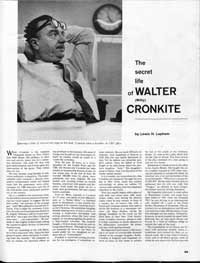
“Over the past 20 years, as a correspondent for the United Press and for CBS, the 46-year-old Cronkite has been present at innumerable historic events. In one recent year, in the line of duty, he traveled 300,000 miles by plane, auto, submarine and even dogsled. He has landed with invading troops on hostile beaches, conversed with queens and dictators, lived under the polar ice for a week, seen governments fall and atomic bombs exploded. …
“Cronkite is renowned among journalists for his prodigious if sometimes erratic, memory. He can recall offhand, for instance, what happened at Smyrna in 1922 [the city was nearly destroyed by fire]. Yet he seldom can remember people’s names. Once he talked at fond length to an interviewer about his newborn daughter, “Judy.” His daughter’s name is Nancy. Judy was the name of the family’s cocker spaniel. …
“He frequently takes part in road rallies in Westchester County and could have been killed in 1961 when the Triumph TR-3 he was driving in an international rally skidded off a road in the Great Smoky Mountains of Tennessee. The car pitched over an embankment and fell end over end into a lake 100 feet below. Cronkite emerged wet but unhurt. …
“He is … determined to make his show as estimable as possible, even though he is conscious of the weaknesses inherent in TV news. ‘It can’t be anything but a front-page service,’ he said, looking out the window. ‘There just isn’t time enough to give more than a few headlines and then hope that people will read the next morning’s paper. Compared to a newspaper the fifteen-minute broadcast, mine or anybody else’s, is a paltry sideshow.’ He proposed the hypothetical example of two men locked inside windowless rooms for a year, one receiving a newspaper every day and the other a daily television broadcast. ‘At the end of that time,’ Cronkite remarked, ‘the guy who had been watching television would come out with a damn strange idea of what had happened in the world.’ …
“Cronkite’s detractors usually criticize him for this unwillingness to advance an outspoken opinion. They complain that he is too polite, too bland, too dull. He considers the criticism unreasonable. ‘Probably if I made a few more acerbic remarks, 1 might win a few more viewers,’ he concedes, ‘but I don’t feel like being funny with the news; 1 don’t think that’s my place.’ …
“Was there anything he hadn’t done that he still would like to do? ‘I’d like to see Hong Kong, Oslo and Addis Ababa,’ he answered. ‘For some damn reason I’ve never managed to get to those cities.’ But just then … another idea captured Cronkite, and he smiled wistfully, as Walter Mitty is said to have smiled, ‘Or maybe, it might be possible, you know, to go to the moon. Can you imagine how great it would be to say to an audience, “Good evening, ladies and gentlemen, this is Walter Cronkite, reporting for CBS direct from the surface of the moon”?’ ”
On July 21, 1969, he was able to do the next best thing.
And that’s the way it was.
Read on, click here to read the PDF.
A Most Beautiful Model
As he climbed the worn, elaborate stairs, Tim was dreaming again about the wonderful box down the street in the window of Rain’s Paints and Hardware. It was a small oblong of a box, shiny black on the outside, white inside, with a brush and six of the brightest colors of the rainbow packed in a row of little cups. There were three shallow scoops in the lid. Tim knew you were supposed to mix the colors in those scoops, using the brush and lots of water.
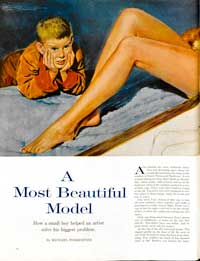
by Michael Forrestier
July 25, 1959
This week Tim’s dream of bliss was to mix all those rainbow colors together and make a painting of a rocket ship in flight. There was a cup of just the right vivid red to do the streaks of fire, to show the rocket jets roaring out into space.
Only one thing stood between Tim’s dream and its fulfillment: a ticket on the box that said $1. Tim didn’t have one dollar. And he must never, never ask for money.
At the top of the old converted house, Tim rapped gently on the door of 4B. He went in and held the knob to keep the door from slamming. Tim couldn’t see much of him because most of Mr. Burford was behind the large…
Recipe: Cherry Glazed Chicken
With cherries on top, this sweet and savory dish takes advantage of summer’s best picks.

Cherry Glazed Chicken
(Makes 6 servings)
- 1 broiler-fryer chicken, cut up
- 1/2 cup milk
- 1/2 cup all-purpose flour
- 1 teaspoon dried thyme
- Salt and pepper, to taste (used 1/4 teaspoon salt, 1/8 teaspoon pepper)
- 1 to 2 tablespoons vegetable oil
- 1 16-ounce can unsweetened tart cherries
- 1/4 cup brown sugar
- 1/4 cup granulated sugar
- 1 teaspoon prepared yellow mustard
- 1 cup fresh cherries, optional
Rinse chicken; pat dry with paper towels. Pour milk into shallow container. Combine flour, thyme, salt and pepper. Dip chicken first in milk, then in flour mixture; coat evenly. Heat oil in large skillet. Add chicken; brown on all sides. Put chicken in 13x9x2-inch baking dish. Bake, covered with aluminum foil, in preheated 350 F-oven, about 30 minutes. Meanwhile, drain cherries, reserving 1/2 cup juice. Combine cherry juice, brown sugar, and granulated sugar in small saucepan; mix well. Bring mixture to boil over medium heat. Add mustard; mix well. Cook 5 minutes, or until sauce is slightly thickened. Stir in cherries. After chicken has cooked 30 minutes, remove from oven and uncover. Spoon hot cherry mixture over chicken. Bake, uncovered, 15 to 20 minutes, or until chicken is tender. Garnish with fresh cherries. Serve immediately.
Nutrition per serving (not including garnish):
Calories: 493
Total fat: 26 g (Saturated fat: 7)
Carbohydrates: 33 g
Cholesterol: 117 mg
Protein: 31 g
Fiber: 1 g
Sodium: 231 mg
Daily RDA values:
Vitamin A: 15 percent
Vitamin C: 8 percent
Calcium: 6 percent
Iron: 20 percent
Recipe courtesy of the Cherry Marketing Institute.
Classic Covers: Life’s a Beach
Some people are in heaven at the beach. Take the pretty lady on the left in Kurt Ard’s August 1958 cover. To her husband, who must burn and peel easily, the beach seems more like that other place. But coated with a variety of potions and covered up to the chin, he is making the sacrifice for her. Perhaps she’ll return the favor tomorrow and settle for a shady spot.
What that man has discovered, the young lady in the July 6, 1929, cover is just finding out: Too much sun can be painful. Or, at least, inconvenient, as we see from the tan lines of the lady in Albert W. Hampson’s September 27, 1941, cover. The stripes of her bathing suit do not line up with the lovely backless dress she wants to wear. (Oops.)
The best way to enjoy the beach is to find a nice secluded spot away from the madding crowds. What usually happens, though, as in George Hughes’ August 8, 1953, cover, is that others soon find that perfect spot, after which, alas, is not so perfect.
We bet you thought crowded beaches were a modern-day phenomenon. J.C. Leyendecker’s September 3, 1932, cover shows a joyously crowded beach with all kinds of characters, topped off by a strapping lifeguard. Not so joyously crowded is the beach scene showing a confused family trying to find their car on the August 1, 1959, cover. Mom thinks it’s this way, but Dad and junior are inclined to think it’s that way. We hope they find it before everyone gets fried.
You have to love the die-hards. Take Smiley (we’re pretty sure that’s his name), on the June 17, 1961, cover. He’s gung-ho about plunging into the posted 52-degree water in spite of the covered-up lifeguard who clearly thinks he’s nuts. Life is short. You have to take advantage of beach days.
Cold Water Swimmer
June 17, 1961
Sunburn
July 6, 1929
King of the Beach
September 3, 1932
Tan Lines
September 27, 1941
No Chance to Be Alone
August 8, 1953
Storm at Beach
July 10, 1954
Ice Cream Truck at the Beach
July 31, 1954
Sunscreen
August 16, 1958
Beach Parking Lot
August 1, 1959
Eavesdropping on Love
August 13, 1960
Recipe: Strawberries Romanoff
An ancient cocktail or dessert to top off any special summer occasion, this sweet treat is every bit of strawberry-citrus goodness.

Strawberries Romanoff
(Makes 6 servings)
- 2 pints fresh strawberries
- 1/2 cup confectioners’ sugar
- 2 tablespoons Cointreau
- 1 tablespoon cognac
- 1 cup evaporated skim milk
Wash, hull, drain, and dry strawberries. Sprinkle sugar over berries in mixing bowl. Pour in Cointreau and cognac. Refrigerate 2 hours, until thoroughly chilled.
Just before serving, whip evaporated skim milk until stiff. Fold in strawberries. Serve at once.
Per Serving: about 1 cup
Calories: 127
Fat: 0.5 g
Cholesterol: 2 mg
Sodium: 51 mg
Carbohydrate 24.1 g
Protein: 3.9 g
This recipe is from The Saturday Evening Post Antioxidant Cookbook by Cory SerVaas, M.D. © 1995 The Saturday Evening Post Society. All rights reserved.
To order a copy of this book, visit store.sepstore.org/cookbooks.html
Create Your Own Butterfly Garden
It’s been said that you can chase a butterfly all over the field and never catch it. But if you sit quietly in the grass, it will come and sit on your shoulder, especially if you have their favorite plants growing in your garden. Here is a simple and enjoyable way to create your own backyard butterfly haven.
First, research which species are indigenous to your area. This determines which plants will supply their favorite food. Nectar-producing plants, or butterfly food, encourage a continuous succession of new visitors to your garden. It’s important to have these flowers in late summer, when most butterflies are active. Some popular choices include butterfly weed and butterfly bush; however, The United States Botanic Garden reports that butterfly bush is no longer recommended due to its invasive nature. For a list of nectar plants and what species they attract, click here.
Next, cultivate the soil to prepare for planting, dispersing flat rocks throughout the garden area. These serve as landing pads for butterflies to perch and warm their wings.
It’s best to select plants that bloom at different times, planting the tallest in the back of the garden near a fence or wall; medium plants in the center; and short plants in the front.
Note that our fluttery friends are also likely to land on or near the edges of shallow mud puddles or moist sandboxes. This could be as simple as filling a container with damp dirt or sand.
Remember to include host plants—the most well-known being milkweeds, recommended for monarchs—for caterpillars to eat and lay their eggs. For a list of host plants, click here.
Pesticides may be harmful to the butterflies, so it’s advised to use natural insecticidal soaps. Avoiding pesticides will make your garden more a friendly retreat for your newly welcomed visitors.
Truth and the Gunfighters
July 21st, according to American history books, is the anniversary of the first Western gunfight. On this date in 1865, James B. Hickok faced Davis Tutt in Springfield, Missouri. Following an argument over loaned money and a pocket watch, the two men faced each other across the city square. Both men reached for their weapons. Hickok’s shot hit Tutt in the chest. The man had enough life left to exclaim “Boys, I’m killed!” and stagger to the courthouse, steps before collapsing.
Or so we believe.
Journalistic standards on the Western frontier were not quite our own. Territorial newspapers were not overly scrupulous about the truth if a story was highly entertaining. Even Harper’s New Monthly Magazine in New York, which was supposedly above such melodrama, published a colorful account of the gunfight in its February, 1867 issue. The reporter, George Ward Nichols, offered the narration of a purported witness who seems unable to stay in dialect: “Bout fifteen paces brought them opposite to each other, and about fifty yard apart. Tutt then showed his pistol. Bill had kept a sharp eye on him, and before Tutt could pint it Bill had hi’sn out. At that moment you could have heard a pin drop in that square. Both Tutt and Bill fired, but one discharge followed the other so quick that it’s hard to say which went off first. Tutt was a famous shot, but he missed this time; the ball from his pistol went over Bill’s head. The instant Bill fired, without waitin ter see ef he had hit Tutt, he wheeled on his hells and pointed his pistol at Tutt’s friends, who had already drawn their weapons. ‘Aren’t yer satisified, gentlemen?’ cried Bill, as cool as an alligator. ‘Put up your shootin’-irons, or there’ll be more dead men here.’ And they put ’em up, and said it war a fair fight.”
What Do We Make of That?
Telling fantastic yarns was a staple of entertainment on the frontier. The fact that life at the edges of Western society was so rough and unpredictable made it hard for newcomers to distinguish between pernicious lies, recreational lies, and the sometimes fantastic truth. Bill Hickok compounded the problem by playing the desperado for tourists. When asked by one visitor how many men he had killed, Hickok reported, “considerably over a hundred.”
The actual events of that day are lost to us. We know that a public gunfight and Hickok killed Tutt. The city charged Hickok with homicide. The trial records have disappeared, but a few newspapers reported on the trial, and the testimony they report does not resemble what we read in Harper’s. Only four men witnessed the shooting, and two were unable to see more than one man. No one could tell who drew first. Hickok plead not guilty on the grounds of self-defense, and the charges were dropped.
Americans are naturally interested in the Western frontier, but we can never be certain how much legend obscures history. We must remain skeptical about any account.
Caveat Lector
Even with due wariness, though, it is amusing and interesting to read an interview with Wyatt Earp, printed in The Saturday Evening Post of November 1, 1930. The author, Stuart N. Lake, had obtained reluctant interviews with the former lawman. (Earp already knew about the tendency of journalists to embroider the truth.)
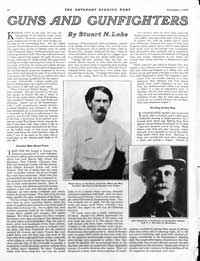
By Stuart N. Lake
November 1, 1930
Earp died before Lake could complete his project, so we can suspect that Lake might have patched together some of this material. Even so, Earp’s comments about Bill Hickok have the unexcited tone of a reliable witness.
“For speed and accuracy with a six-gun there was no man in the Kansas City group who was Wild Bill’s equal. … Hickok knew all the tricks which the fancy shooters employed and was as good as the best of them at that sort of gun play, but when he had serious business in hand, a man to get—the acid test of marksmanship—I doubt if he employed them. At least, he told me that he did not. I have seen him in action and I never saw him fan a gun, shoot from the hip, or try to fire two pistols simultaneously. Neither have I ever heard a reliable old-timer tell of any trick shooting employed by Hickok when fast, straight shooting meant life or death.
“That summer in Kansas City he performed a feat of pistol shooting which often has been cited as one of the most remarkable on record. … Hickok was on Tom Speers’ bench showing a pair of ivory-handled six-guns which Senator Wilson had given him … when Tom asked Bill what he could do with the new guns, he added that he did not mean at close range, but at a distance that would be a real test. Diagonally across Market Square, possibly 100 yards away, was a saloon, and on the side wall toward the police station a sign that carried a capital letter, “O.” The sign ran off at an angle from Hickok’s line of sight; yet before anyone guessed what his target was, Wild Bill had fired five shots from the gun in his right hand, shifted weapons and fired five more shots. Then he told Tom to send someone over to look at the “O.” All ten of Bill’s slugs were found inside the ring of the letter.
“That was shooting. There were twenty or more witnesses to the feat, yet in every account of it that I have read in recent years, it has been stated that Hickok fired those ten shots from his hip. I am not detracting from Wild Bill’s reputation or ability when I bear witness that while he was shooting at the “O,” he held his gun as every man skilled in such matters preferred to hold one when in action—with a half-bent elbow that brought the gun slightly in front of his body at about, or slightly above, the level of the waist.
“Whenever you see a picture of some two-gun man in action with both weapons held closely against his hips and both spitting smoke together, you can put it down that you are looking at the picture of a fool, or at a fake. I remember quite a few of those so-called two-gun men who tried to operate everything at once, but, like the fanners, they didn’t last long in really proficient company.”
Featured image: An illustration of the gunfight between Hickok and Tutt from Harper’s Magazine, February, 1867 (Wikimedia Commons)
President Obama to Speak at NAACP
A Proud Moment in a Long Struggle
President Obama will be in New York on July 16 speaking to a crowd of 10,000 people. While he has addressed much larger groups, rarely has he spoken on such a significant occasion: America’s first black president will be giving the keynote speech at the 100th birthday celebration of the National Association for the Advancement of Colored People (NAACP).
The NAACP was formed in 1909 to address a rising opposition to civil rights. Racism in America was discarding its subtlety, coming out in the open, and making a new bid for power. Southern legislators had enacted new laws that made it difficult, if not impossible, for black Americans to vote. Racial tensions ignited race riots, and more were coming.
Dr. W.E.B. DuBois edited the NAACP’s magazine, The Crisis, and helped frame the association’s goal:
“To promote equality of rights and to eradicate caste or race prejudice among the citizens of the United States; to advance the interest of colored citizens; to secure for the impartial suffrage; and to increase their opportunities for securing justice in the court, education for the children, employment according to their ability and complete equality before law.”
The early years were daunting and Washington extended little sympathy for the cause. The NAACP addressed the need to end official segregation, promote black men to officers in the military, and oppose the rising enrollment in the Ku Klux Klan. The effort met consistent opposition from southern legislators who blocked federal legislation against lynching.
Halfway through its first century, the NAACP was confronting racism as virulent as ever. Black Americans were achieving some of their goals, but they were also being accused of seeking their rights too aggressively.
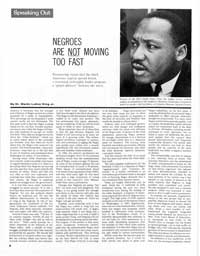
Dr. Martin Luther King, Jr.
Nov. 7, 1964
In the November 7, 1964, Post, Dr. Martin Luther King addressed this issue directly in his article, “Negroes Are Not Moving Too Fast.”
“Among many white Americans who have recently achieved middle-class status or regard themselves close to it, there is a prevailing belief that Negroes are moving too fast and that their speed imperils the security of whites. Those who feel this way refer to their own experience and conclude that while they waited long for their chance, the Negro is expecting special advantages from the government. It is true that many white Americans struggled to attain security. It is also a hard fact that none had the experience of Negroes. No one else endured chattel slavery on American soil. No one else suffered discrimination so intensely or so long as the Negroes. In one or two generations the conditions of life for white Americans altered radically. For Negroes, after three centuries, wretchedness and misery still afflict the majority.
“Anatole France once said, ‘The law, in its majestic equality, forbids all men to sleep under bridges—the rich as well as the poor.’ There could scarcely be a better statement of the dilemma of the Negro today. After a decade of bitter struggle, multiple laws have been enacted proclaiming his equality. He should feel exhilaration as his goal comes into sight. But the ordinary black man knows that Anatole France’s sardonic jest expresses a very bitter truth. Despite new laws, little has changed in his life in the ghettos. …
“Charges that Negroes are going ‘too fast’ are both cruel and dangerous. The Negro is not going nearly fast enough, and claims to the contrary only play into the hands of those who believe that violence is the only means by which the Negro will get anywhere. …
“A section of the white population, perceiving Negro pressure for change, misconstrues it as a demand for privileges rather than as a desperate quest for existence. The ensuing white backlash intimidates government officials who are already too timorous, and, when the crisis demands vigorous measures, a paralysis ensues. …
“Our nation has absorbed many minorities from all nations of the world. In the beginning of this century, in a single decade, almost nine million immigrants were drawn into our society. Many reforms were necessary—labor laws and social-welfare measures— to achieve this result. We accomplished these changes in the past because there was a will to do it, and because the nation became greater and stronger in the process. Our country has the need and capacity for further growth, and today there are enough Americans, Negro and white, with faith in the future, with compassion, and will to repeat the bright experience of our past.”
The NAACP has no reason to close operations this year. There is, alas, still more work ahead. However, we hope they, and the country, savor the moment when President Obama shares the podium with America’s first black secretary of state, Colin Powell, and our first black attorney general, Eric Holder. America should be very proud of this organization and the long dedication of its generations of members.
Recipe: Zucchini Stir-Fry
Fry up some fun in the kitchen with a healthy helping of the best summer produce.

Zucchini Stir-Fry
(Makes 5 servings)
- 1/2 pound zucchini, sliced
- 1/2 pound yellow squash, cut in pieces
- 1/2 pound broccoli florets
- 1/2 pound cauliflower florets
- 1/2 pound snow peas
- 1/2 cup sesame oil
- 1 tablespoon garlic
- 1/2 teaspoon ginger, freshly grated
- 1 pimiento, chopped and squeezed
Bring large pot of water to boil. Blanch each of first five ingredients separately for 1 minute. Drain each and place immediately in ice water. Heat oil in pan until hot. Add garlic and ginger and saute for 1 minute and 30 seconds. Add vegetables and toss ingredients until hot. Add chopped pimiento.
Per serving: about 2 cups
Calories: 289
Fat: 22.9 g
Cholesterol: 0 mg
Sodium: 20 mg
Carbohydrate: 14.9 g
Protein: 5.6 g
Variations: Substitute carrots for snow peas, if desired. If including onions, add to pan with garlic and ginger. [Nutrition facts do not account for variations.]
This recipe is from The Saturday Evening Post Antioxidant Cookbook by Cory SerVaas, M.D. © 1995 The Saturday Evening Post Society. All rights reserved.
Classic Covers: Dog Days of Summer
It’s an all out neighborhood war! The June 30, 1951, cover shows a passel of kids in a multiyard battle with garden hoses. Ah, the days before Super Soaker squirt guns. Pedestrians wisely steer clear, even though a squirt of cold water might feel pretty good on this hot summer day. (Try to get these same children to take a bath, and there would be heck to pay.)
Kids and fire hydrants go back a long way. A July 1915 cover shows us a little girl, baby, and dog cooling down with the help of a handy water source.
Sometimes you gotta pay to play. Stevan Dohanos’ baseball player of July 1946 is mowing the lawn as fast as he can so he can get to the game–while the team awaits. And sometimes you just gotta play. John Falter’s boys swinging into the water of San Francisco Bay looks risky, but the editors insisted, “If a small boy, when at play, is not doing something perilous, he must be sick.”
Perhaps less perilous (at least for the humans pictured, if not the dog) is the August 1952 cover, No Girls Allowed. Hoisting the dog up into the tree house, the boys know how to spend a summer day without video games, cell phones, or TV. E.M. Jackson’s kids in a water fountain found an inexpensive way to cool off in July of 1926.We certainly hope they don’t get in trouble.
Grown-ups, too, have their way of getting through the “dog days,” as demonstrated by the young lady in the August 24, 1912, cover by Artist Clarence F. Underwood. Check out the bathing suit! Not our idea of hot-weather attire, but probably 1912’s idea of a pin-up girl.
One of the most relaxing covers of a summer afternoon is John Atherton’s Sleeping Farmer of 1947. Under a shady tree, the normally busy land worker can’t resist a snooze, and it’s such a lazy day, even the cows and horses seem to be napping with him.
But no one knew how to spend the dog days of summer better than Norman Rockwell. His August 11, 1945, salesman couldn’t resist pulling the car over, stripping down, and getting up to his neck in cool water. (We won’t tell the boss.) Rockwell’s sailor on leave makes us envious of his downtime, even if well deserved. It’s hard to get more relaxed than a man and dog in a hammock on a sun-dappled afternoon. The sailor had to borrow his shipmate’s shirt for the decorations on the chest. Rockwell borrowed the dog from his own son, the hammock from a neighbor, the house from yet another neighbor, and Rockwell’s own shoes complete the picture. Somehow it comes together enough to make us want to find a hammock and snooze a dog day away.
Water Fight
June 6, 1951
Fire Hydrant Shower
July 24, 1915
Baseball Player Mowing the Yard
July 20, 1946
San Fransisco Bay Boys
May 26, 1956
No Girls Allowed
August 9, 1952
Swimming in Fountain
July 24, 1926
Wet Swimsuit
August 24, 1912
On Leave
September 15, 1945
Sleeping Farmer
August 23, 1947
Swimming Hole
August 11, 1945
Cut Flower Care
Brightening your home with beautiful bouquets is one of the perks of flower gardening, and there are techniques for cutting and preserving flowers so they stay fresh and beautiful for as long as possible. But these techniques can vary from flower to flower, depending on the type of plant. Roses, for example, like other flowers, are best cut in early morning or evening or on cool, cloudy days to minimize moisture loss. Remove leaves that will be below the water line. Cut the stems off diagonally to enlarge the absorption surface, and do this while the stems are immersed in water so they won’t be obstructed by air bubbles. Treat asters and snapdragons in the same manner.
Cut roses, daffodils, gladiolas, and irises when the flowers are in bud. They will open in the vase. Other flowers such as marigolds, delphiniums, and dianthus should be cut after opening. After cutting the stems with a sharp, nonserrated knife, immerse the stems in a pail of lukewarm (never cold) water and place in a cool spot out of the sunlight for a few hours. This will increase longevity.
Flowers with hollow stems, such as daffodils, delphiniums, and amaryllis, will live longer if you turn them over after cutting, fill the stems with water, then place a plug of cotton in the base and submerge the stems immediately in the vase.
Before putting daffodils, hollyhocks, hydrangeas, or poppies in a vase, singe the ends briefly with a lighted match. This will keep the milky substance in their stems from coagulating and blocking their water supply. It will also prevent the milky substance from entering the water and adversely affecting other flowers.
To prepare clematis flowers, pour boiling water on the stems and then place them in cold water. Additionally, like some people, these flowers prefer a little nip to stay happy. The Japanese dip them in an alcoholic beverage, such as champagne, for a few hours before putting them in a vase. We don’t know if they drink the champagne afterwards, but we don’t recommend it.
For bouquets with gladioli, cut the flower when the lowermost floret is opening, and remove a few buds from the top.
Other Bloom-Extending Techniques
Use products such as Floralife, a powder that is added to the water. Or make your own by putting flowers into a solution of one gallon of water with one can of clear soft drink added. Or by adding two teaspoons of a medicinal mouthwash. Others suggest adding an aspirin, a sugar cube, or some bacteria-killing laundry bleach.
To resuscitate wilted flowers, cut a couple inches off the stems and place in a few inches of warm water for a half hour; then put back into the vase with fresh, cool water. In a hot room, place some ice cubes in the water. Or place the flowers in a cooler room for a few hours.
And for that final touch to keep your bouquet looking spiffy, why not cheat a bit? Spray cut flowers lightly with an aerosol hair spray to prevent blossoms from falling. Let us know if this works!
The Dog Who Knew Baseball
Talking or eating, Skid Kelly never gave his mouth much rest.
“Stella,” he said, as his fork speared another lunch lamb chop, “today I will prove for all time that I’m the best semipro pitcher and the best hitter ever seen in these parts.”
Stella, who at 28 had consistently failed to prod her beau into a formal commitment to matrimony, was more given to tart comment than soothing pronouncements. “Ty Cobb must be out of his mind with jealousy.”
Skid—a nickname derived from a nose shaped like a playground slide—responded only to what suited his hearing. “I should never have given up professional baseball.”
“Wasn’t it the other way around?”
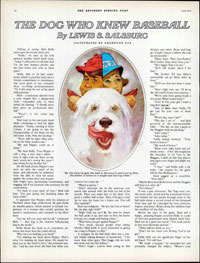
Skid kept to his one-track mind while continuing to feed his slight physique. “Today, starting at three o’clock. I am going to win the Championship of the State for the old home town. Pass the ketchup.”
“There will be eight other players on the field, modest one.”
“Me and Pepper could do it alone.”
“My dear Kelly. Your Pepper is still a dog . . .”
Read more, click here to download PDF.
Classic Covers: We All Scream for Ice Cream!
There is a bit of controversy as to when the ice cream soda first appeared, apparently in the 1870s, and who gets credit for it. However, there’s no dispute that the bevy of lovely ladies enjoying drinks at a soda fountain by artist Clarence F. Underwood appeared on the cover of The Saturday Evening Post on July 27, 1912.
Under the cuter-than-the-law-should allow category, a small boy and girl at the soda fountain on the June 6, 1936, cover face a predicament: He can’t find his money. Look at his face, and tell us you don’t want to pinch his cheek.
Rockwell’s teenage soda jerk seems much more interested in the female customers than in serving up ice cream, but definitely more interested in the ice cream than the girl is the black and white dog intently watching the melting ice cream illustrated by Ellen Pyle on the August 12, 1922, cover.
Cover artists were apparently fond of melting ice cream, as we see in two covers: Rockwell’s boy of July 13, 1940, and Stevan Dohanos’ girl with two hands full of cones on the July 29, 1944, cover. The unspoken question is clear: Will they make it back to the others before it all liquefies? A sticky situation.
Even policemen like ice cream. The all-too-human cop on the September 22, 1951, cover said his wife got after him for his candy and ice cream addictions, going so far as to claim his belt was slipping under his stomach. Nonsense, of course. “It doesn’t,” the officer explained, “I just wear it loose to have my muscles free and unhindered.” We won’t argue. But the officer told cover artist Dohanos, “Well, buy me a cone, and I’ll pose, but if my wife hears about this, I suppose I’ll get Hail Columbia.” A Post artist would never wish to be the source of marital conflict. Perhaps that’s why Dohanos painted dark glasses on the cop.
More controversial than when the ice cream soda was invented is the sin of running out. Pity the lady dipping ice cream at a kids’ party on the June 27, 1953, cover. More children than ice cream? Perhaps the policeman’s chances with his wife fare better than the fearful scene that will soon unfold.
Joys of Summer
July 13, 1940
Soda Fountain Sweeties
July 27, 1912
Bottom of the Soda
May 22, 1920
Pete’s Double Headers
September 22, 1951
Out of Ice Cream
June 27, 1953
Ice Cream Cone
August 12, 1922
Dripping Cones
July 29, 1944;
Birthday Party
May 18, 1935
Soda Jerk
August 22, 1953
No Money for her Soda
June 6, 1936
Nicole Johnson: Getting Real with Diabetes
There is no doubt about it. Diabetes is a daily and demanding challenge. But Nicole Johnson, who was diagnosed with type 1 diabetes in 1993, wants others with the disease to know that they too can enjoy a healthy life. Crowned Miss America in 1999 and now a busy wife, mother, and leading advocate for diabetes research and education, Johnson recently talked with the Post about what’s new about living with diabetes and her hopes for the future.
Q: You talk with many people who have diabetes. What is the most common question they ask?
A: Everyone wants to know about a cure, and then they ask about ways to make their lives easier. The short answer to the first question is that we don’t know when there will be a cure. However, we have technology that can help people right now. I manage my diabetes by wearing an insulin pump and a continuous glucose sensor. In the future, these devices will be able to communicate to each other and make intelligent decisions about how to deliver medication to the body. Right now, my insulin pump provides a slow drip of insulin into my body 24 hours a day, 7 days a week. I take it off to take a shower, and that’s about it. I manually tell it to give me insulin according to the food that I eat via a remote. Thirty or so years ago, it was called the big blue brick. Now it looks as though I’m texting on my cell phone.
Q: Isn’t type 1 diabetes typically diagnosed in young kids?
A: Research tells us that type 1 may occur at any age point. Although often detected during childhood, people in their 50s, 60s or 70s can develop the disease. A popular hypothesis is that a virus may trigger the disease in people who carry a genetic predisposition for it. That seems to have happened to me—none of my relatives have type 1 diabetes.
My daughter, who is 3 ½, is participating in an international study called Type 1 Diabetes TrialNet that is gathering information about personal and family history, health risks, and antibodies that each of us carry. They will draw her blood every year or two to assess whether her genetic predisposition has changed. So far she has the lowest risk possible of developing diabetes. But we are committed as a family to do our part in trying to advance research and prevent diabetes.
Q: What would you say to a person who has just been diagnosed with diabetes?

A: The first thing I would say is that living with diabetes does not mean you have to stop dreaming. However, if you don’t take some aggressive steps to make sure that you are managing the condition, there can come a time when the disease gets the upper hand. Patients have a responsibility to act in a way that will afford us the opportunity to pursue dreams, goals, and aspirations. But you can become a Supreme Court nominee, you can become a pro athlete, and you can become Miss America.
Q: Despite a decade of efforts of educators like yourself, Americans seem to be eating more and exercising less. Rates of diabetes are soaring. How can we hope to reverse these trends? What is it going to take?
A: We have got to figure out how to revamp and reframe our communication and educational messages about health and wellness. People need practical advice and parent training is key. One of my big struggles this week is making lunch for my daughter to take to school for the first time. It’s overwhelming! What do you put in a lunch box?
I also now have the pleasure of working in a university environment to help train medical students on issues like compassion and emotions. The goal is to improve the way they communicate health messages to their patients. Data suggest that patients absorb only about 10 percent of the health information delivered by health professionals.
The diabetes community feels as though their struggle is not understood, that they live in isolation. So we are going to have the students live like a person with diabetes. For a couple of days of their training, they will wear insulin pumps, test their blood sugar and count the carbohydrates at every meal. The effort will also expose health care professionals in new ways to available technology so that they are more familiar with it when they get into the patient environment. Only a small number of people utilize insulin pumps and sensors. And part of that underutilization is related to health care professionals who are unfamiliar with the devices.
Q: Why did you start the Nicole Johnson Foundation?
A: Part of my background is in public health, and I have become very cognizant and committed to addressing gaps in education. There is a void of appropriate health communication and a big question mark of how to address it. The Foundation exists to hold community events that focus on diabetes reality. It is very frustrating to me when patients receive information that is one size fits all. Advice such as “follow a meal plan” is not helpful when you wind up at Wendy’s and everyone is eating a Frosty. What people need to know is: Here’s how many carbs, here’s how you give the insulin, and here’s the good strategy for living. That’s the point of the foundation: to be real and let diabetes come into our lives instead of changing our lives to meet diabetes.
For more about living with diabetes, and dLife (a weekly program that airs on CNBC), visit nicolejohnson.com.
